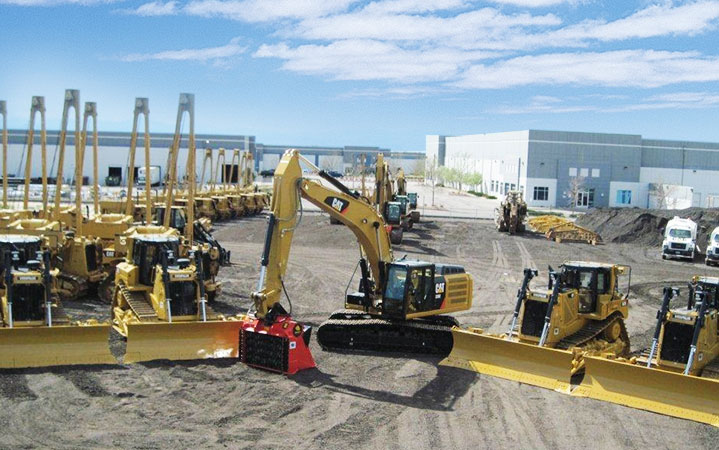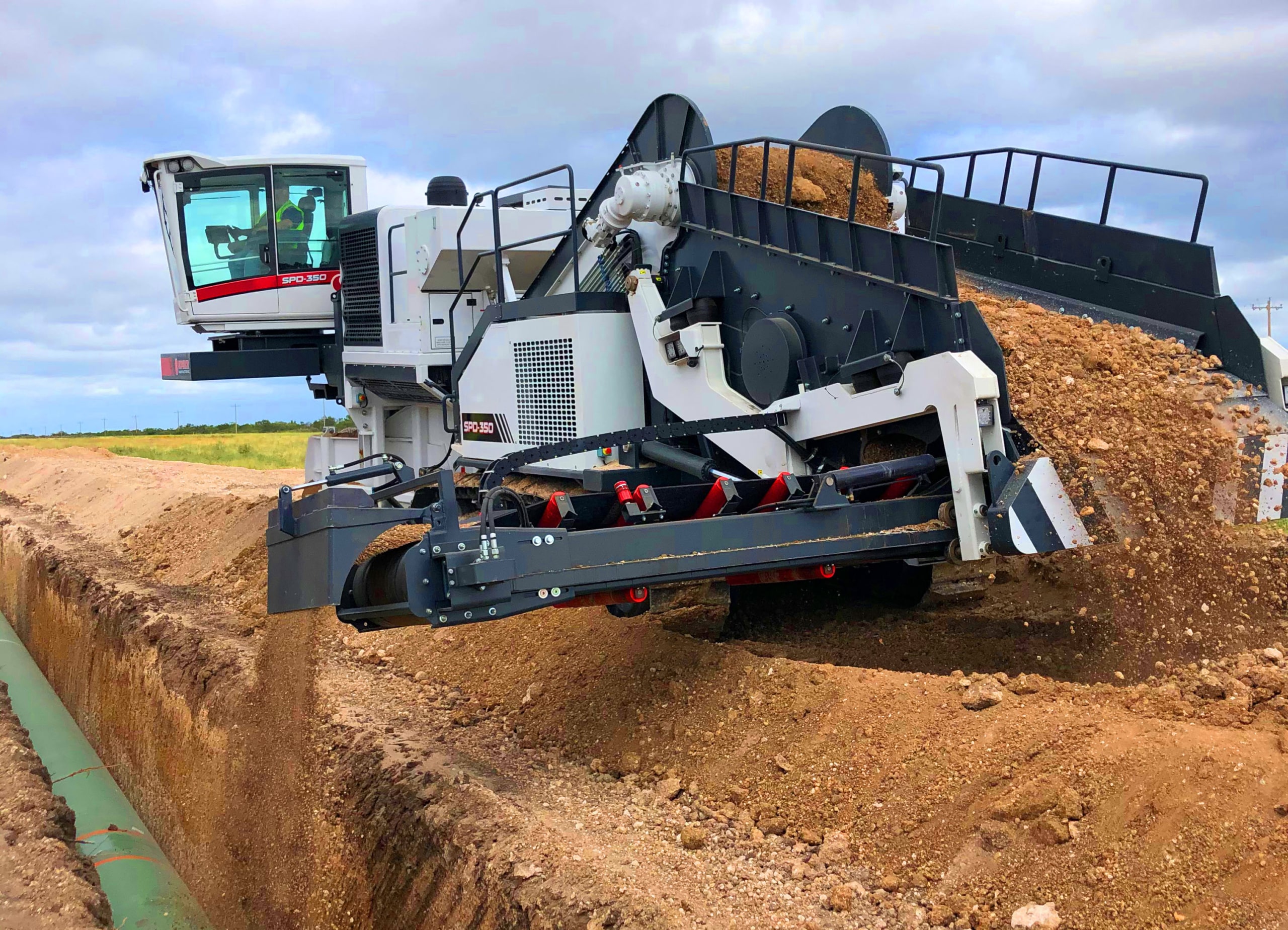Superior Rentals Contact: customer support experience
A Comprehensive Guide to the Various Kinds of Oil Field Equipment and Pipeline Equipment Available
The oil and gas sector counts greatly on specialized equipment for effective removal and transport. Various types of machinery, from drilling rigs to tank, play crucial duties in this intricate procedure. Each tool offers distinct functions that add to total operational success. Understanding these components is necessary for any person associated with the industry. As the market progresses, so also do the innovations that sustain it. What improvements are on the perspective?

Drilling Rigs: The Backbone of Oil Exploration
Drilling rigs work as the essential machinery in the domain name of oil expedition, making it possible for companies to accessibility hydrocarbon reserves buried deep underneath the Earth's surface. These rigs are available in different types, consisting of land rigs, offshore rigs, and mobile systems, each made to run in specific atmospheres. Equipped with innovative modern technology, piercing rigs can permeate geological developments with accuracy, guaranteeing reliable resource extraction. The architectural honesty and operational abilities of these rigs are important, as they must stand up to severe problems and substantial pressures. Additionally, the selection of a drilling rig impacts the general task price and timeline, making it an essential factor to consider for oil firms looking for to optimize their exploration efforts and make best use of efficiency in their procedures.
Pumps: Crucial for Fluid Motion
In the oil extraction process, the role of pumps is significant, assisting in the motion of fluids throughout different stages of production. Pumps are important for delivering petroleum, water, and other liquids from underground reservoirs to the surface area and after that with pipelines to refineries. They are available in different types, consisting of centrifugal, favorable displacement, and completely submersible pumps, each offering details objectives based upon the liquid features and functional demands. Centrifugal pumps are generally utilized for their effectiveness in high-flow applications, while positive variation pumps master dealing with thick liquids. The selection of pump influences overall efficiency, operational safety and security, and maintenance expenses. Correct selection and upkeep of pumps are essential for enhancing manufacturing and minimizing downtime in oil field operations.
Shutoffs: Managing Flow and Pressure

Valves play an essential function in taking care of the circulation and stress of liquids within oil fields and pipes. Numerous kinds of valves serve distinct applications, each made to satisfy certain features fundamental for efficient operation - Superior rentals squeeze tools. Understanding the qualities and usages of these shutoffs is crucial for optimizing system performance and safety
Kinds of Valves
Vital elements in oil field operations, valves play a crucial role in controlling the flow and stress of liquids within pipes and tools. Numerous kinds of shutoffs are used to satisfy the varied requirements of oil and gas manufacturing. Typical types include gate valves, which give a straight-line flow and very little pressure decline; world valves, recognized for their strangling capacities; and round shutoffs, acknowledged for their fast on/off control. Additionally, check valves prevent backflow, while butterfly valves supply a light-weight remedy for managing circulation. Each shutoff kind is designed with particular products and setups to hold up against the extreme problems typically found in oil fields, making sure reliability and efficiency in procedures. Comprehending these kinds is vital for reliable system management.
Valve Applications and Features
While various kinds of valves offer distinctive objectives, their primary applications focus on regulating circulation and stress within oil and gas systems. Valves such as entrance, globe, and ball valves regulate liquid activity, making certain peak performance and safety and security. Entrance valves are generally used for on/off control, giving marginal circulation resistance. World shutoffs, on the other hand, deal specific flow guideline, making them appropriate for throttling applications. Round valves are preferred for their quick procedure and tight securing abilities. Furthermore, stress safety valve are critical for preventing system overpressure, securing equipment honesty. In general, the appropriate choice and application of valves boost operational effectiveness, making certain the reputable transportation of oil and gas through pipelines and processing centers.
Compressors: Enhancing Gas Transportation
Compressors play an important duty in the efficient transport of gas, making sure that it relocates efficiently through pipelines over lengthy distances. These devices enhance the stress of gas, allowing it to get rid of rubbing and elevation adjustments within the pipeline system. Additionally, compressors facilitate the balancing of supply and demand, fitting variations in intake and manufacturing prices. Numerous kinds of compressors are employed in the industry, including centrifugal, reciprocating, and rotating screw compressors, each offering distinct benefits see post based upon the operational needs. Regular upkeep of these compressors is important to make the most of efficiency and decrease downtime, ultimately adding to a reliable gas transportation network. Their vital function underscores the significance of compressors in the general oil and gas facilities.
Storage Tanks: Safe and Effective Fluid Administration
Efficient transport of all-natural gas counts on various support group, among which is the appropriate management of storage containers. These tanks play a crucial duty in safely including fluids, making certain that functional efficiency is maintained while decreasing environmental risks. Created from long lasting materials, they are developed to endure high pressures and harsh components. Appropriately sized and strategically located, tank facilitate the smooth circulation of gas and other liquids, stopping bottlenecks in supply chains. Regular upkeep and tracking are vital to spot leakages or architectural issues, advertising safety and security and compliance with governing standards. Ultimately, the reliable management of tank is essential for the overall stability and dependability of the oil and gas sector's liquid handling systems.
Pipeline Systems: Framework for Transportation
Pipeline systems act as the backbone of the oil and gas industry, facilitating the reliable transport of hydrocarbons over substantial ranges. These systems contain different elements, consisting of pipes, shutoffs, pumps, and compressors, all meticulously made to assure seamless circulation. The materials utilized in pipeline construction, commonly steel or her latest blog high-density polyethylene, are selected for toughness and resistance to corrosion. Pipeline networks can extend across land and water, linking manufacturing sites to refineries and warehouse. Additionally, advanced innovation enables real-time tracking of circulation prices and pressure levels, improving operational efficiency. The calculated positioning of these pipes lessens ecological influence while optimizing source ease of access, consequently playing a crucial duty in conference energy demands worldwide.
Security Equipment: Guaranteeing Worker and Environmental Management
The operation of pipeline systems, while important for energy transport, additionally offers navigate to this site significant safety obstacles for employees and the atmosphere. Security equipment plays a significant duty in alleviating these risks. Personal safety equipment (PPE) such as helmets, gloves, and non-slip shoes safeguards employees from physical threats. In addition, gas discovery systems keep an eye on for leaks, guaranteeing that hazardous substances do not present a danger to workers or the bordering community. Emergency shutdown systems are vital for rapidly halting procedures throughout a dilemma, avoiding prospective disasters. Spill control products, including absorbents and barriers, are basic for reducing ecological effect. On the whole, spending in all-inclusive safety tools is vital for keeping operational honesty and safeguarding both employees and the environment in the oil and gas sector.

Often Asked Concerns
Exactly how Do I Select the Right Oil Field Equipment for My Job?
Selecting the best oil field equipment includes assessing task specifications, budget plan restraints, and functional demands. Consider factors such as tools dependability, compatibility with existing systems, and the supplier's credibility to assure peak efficiency and safety.
What Are the Maintenance Needs for Oil Field Equipment?
Upkeep requirements for oil area tools include routine evaluations, lubrication, and timely repairs. Operators should additionally follow producer guidelines, display performance metrics, and warranty compliance with safety guidelines to enhance durability and performance.

Just How Can I Ensure Conformity With Environmental Laws?
To assure compliance with ecological policies, firms must conduct normal audits, execute ideal methods, spend in training, keep appropriate paperwork, and remain upgraded on legislation (Superior rentals squeeze tools). Partnership with environmental firms can additionally enhance adherence to regulations
What Is the Average Life-span of Pipeline Equipment?
The ordinary life-span of pipeline devices normally varies from 20 to 50 years, depending upon elements such as material high quality, environmental conditions, and upkeep methods. Routine evaluations can significantly influence durability and functional performance.
Just how Do I Securely Transfer Oil Field Equipment to Remote Locations?
Delivering oil area tools to remote areas calls for mindful preparation, consisting of course analysis, safeguarding authorizations, making use of ideal lorries, and making certain safety protocols are followed. Proper training and interaction among staffs are vital for successful transport.